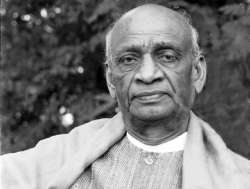Sardar Vallabhbhai Patel Birth Anniversary: 10 facts to know about India's first Home Minister
Prime Minister Narendra Modi innaugrated the Statue of Unity, the tallest statue in the world, on the occasion of Vallabhbhai Patel’s 143rd birth anniversary.

Prime Minister Narendra Modi on Wednesday inaugurated the Statue of Unity, the tallest statue in the world, which is dedicated to Sardar Vallabhbhai Patel. Sardar Patel, India's first deputy prime minister and home minister, played a major role in the country's struggle for independence. The nation is celebrating 143rd birth anniversary of Sardar Patel today.
Here are 10 important facts about Sardar Patel:
1. Sardar Vallabhbhai Patel is popularly known as Sardar Patel and is also called the "Iron Man of India".
2. He was the first Deputy Prime Minister of India and founding father of the Republic of India.
3. Sardar Patel passed his matriculation at the late age of 22.
4. Patel spent years away from his family, studying on his own with books borrowed from other lawyers and passed examinations within two years. He became one of the most successful barristers of India.
5. Earlier he was not interested in politics but after meeting Gandhi, his life changed after having been influenced by his politics and thoughts. A month later at the Gujarat Political Conference in Godhra, Patel became the secretary of the Gujarat Sabha.
6. Sardar Patel played a key role in integrating over 550 princely states around the time of Independence.
7. The Government of India began observing Rashtriya Ekta Diwas (National Unity Day) on Sardar Patel’s birth anniversary (October 31) from 2014.
8. In April 1947, Sardar Vallabhbhai Patel, then a Home member of the interim government, started his tour in Gujarat asking people to maintain calm and communal harmony. He also worked for the equality of women, untouchability and caste discrimination in India.
9. Sardar Patel joined Gandhi’s Non-cooperation Movement and toured the state to recruit more than 300,000 members and raise over Rs.15 lakh in funds.He also led Satyagraha movement in Nagpur in the absence of Gandhi in 1923 against a law that restricted the hoisting of the Indian flag.
10. After suffering a massive heart attack, he died on 15 December 1950.